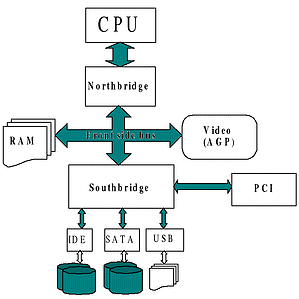PC Motherboard Expansion Cards
By Jason Kohrs
Part 1: PCI
The expansion slots available on motherboards allow for a variety of upgrades in
a computer system, but matching the appropriate card to an available slot needs
to be addressed before making any purchasing decisions. The most common types of
expansion cards for modern computer systems can be broken down into three formats:
PCI, AGP, and PCI Express. Each of these formats will be addressed separately in
this three part series of Tech Tips, starting with PCI.
The letters "PCI" stand for Peripheral Component Interconnect, and is the term
used to describe a bus that connects components directly to the system's memory
and to the system's processor through the "frontside bus." When discussing
communications on a motherboard, the term "bus" has nothing to do with the big
yellow thing that takes the kids to school. There may be several buses in a
computer, and like the PCI bus, they are all responsible for managing the
communication "traffic" from different devices to the processor.

image source: Wikipedia.org
The frontside bus is a high speed connection that manages the processor's
communication with items such as hard drives, memory, and PCI devices, while not
burdening the processor with all of the management responsibilities.
First developed by Intel in the early 1990s, PCI was spawned from even earlier
(and slower) bus architectures such as ISA (Industry Standard Architecture) and
VL-Bus (VESA Local), which were common back in the 1980s and 1990s.
The original specifications for the PCI Bus had a speed of 33 MHz, with a 32-bit
bus width, and a maximum bandwidth of 132 MB per second. There have been a few
revisions to the PCI standard which have significantly increased these
specifications, taking it to 66 MHz, 64-bit, and 512 MB per second, respectively.
| 
